Monthly economic brief: March 2023
The monthly economic brief provides a summary of latest key economic statistics, forecasts and analysis on the Scottish economy.
This document is part of a collection
Consumption
Consumer sentiment strengthened in January but remains significantly negative.
Consumer sentiment
- Consumer sentiment indicators continue to highlight the pressures that households and consumers face from high inflation and the rapid increase in the cost of living.
- These challenges intensified over 2022 which was reflected in a sharp drop off in the Scottish Consumer Sentiment Indicator, however lastest data indicates that consumer sentiment has improved slightly through the turn of the year, albeit remaining significantly negative overall.[13]
- In January, the Scottish Consumer Sentiment Indicator stood at –22. This was a rise of 4.1 points from December, implying a further slight strengthening in sentiment for a third consecutive month, having fallen to its recent trough (and time series low) in October (-29.4 points).
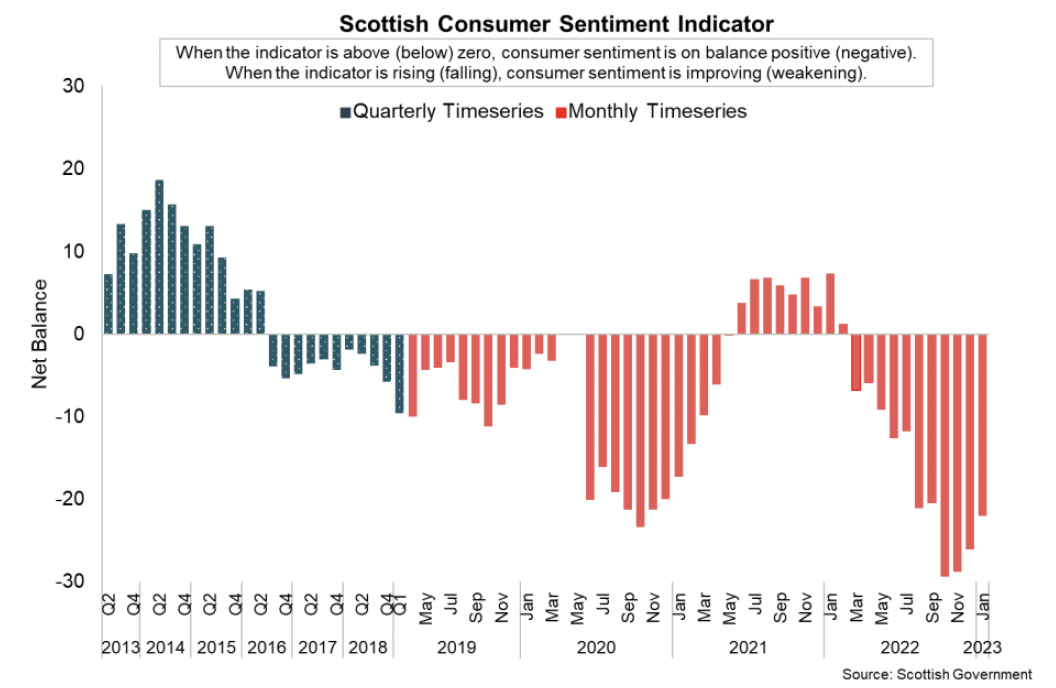
- On the economy, respondents on balance consider current economic circumstances to be worse than last year (-27.9, up from -35.5 in December) however expect the economy to improve over the coming year relative to the current situation (5.2, up from -1.0 in December). This is the first time the economy expectations indicator has been positive since September 2022.
- In terms of households personal finances, respondents on balance continued to report that their household finances are less secure than 12 months ago (-25.4, up from -29.4 in December). Furthermore, looking ahead, respondents continue to expect their financial security to fall over the coming year (-15.4, down from -14.4 in December). While both indicators remain in negaive territory, they have strengthened slightly from their recent low level in the fourth quarter of 2022.
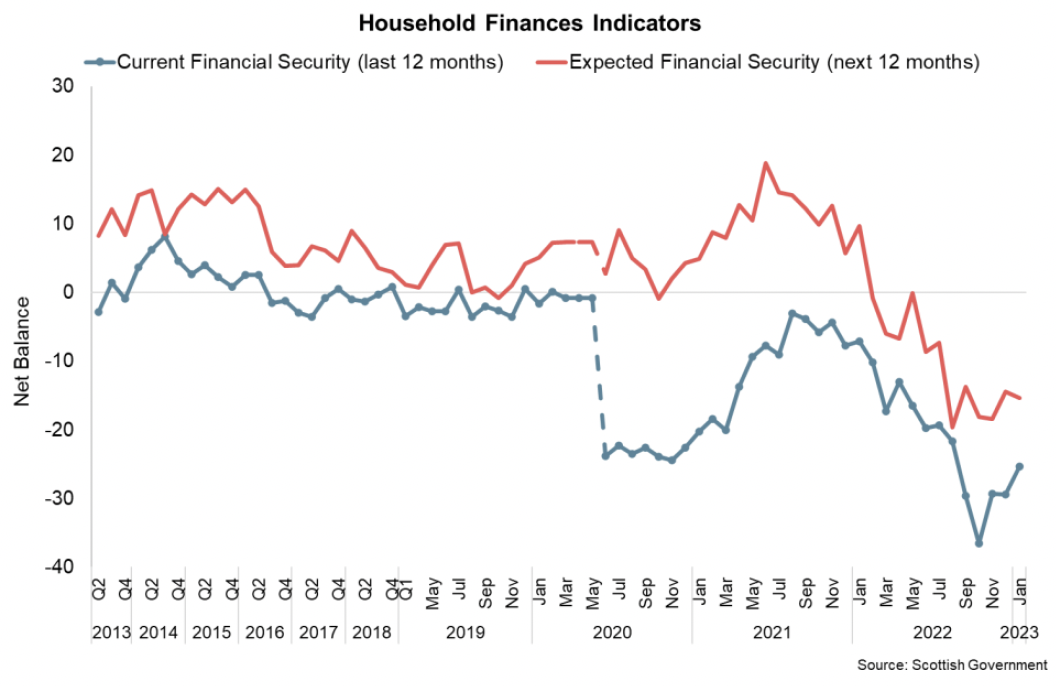
- During 2022 households became less relaxed about spending money as inflationary and cost of living pressures increased. In January 2023, the spending indicator strengthened slightly (-46.4, up from -50.0 in December), indicating that households continue to be uneasy about spending money, but to a slightly lesser degree than towards the end of 2022.
- The recent strengthening in consumer sentiment is encouraging, albeit that it is strengthening from a low base. Furthermore, the fall in the household finances expectations indictor further emphasies the concerns that househlds have for their household finances over the coming year and remains a risk to consumption growth over the months ahead.
- This is seen in other household surveys. At a GB level, the ONS Public Opinions and Social Trends survey for February showed that 92% of adults reported an increase in the cost of living compared with a year ago and 67% reported an increase compared to the previous month.[14] The reasons for the increase in the cost of living remain largely unchanged in recent months: (i) price of food shopping (95%); (ii) gas or electric bills (79%); (iii) price of fuel (45%).
- The most common actions reported were spending less on non-essentials (65%) and using less fuel such as gas or electricity in their home (57%), while 47% reported shopping around more and 43% reported spending less on food shopping and essentials.
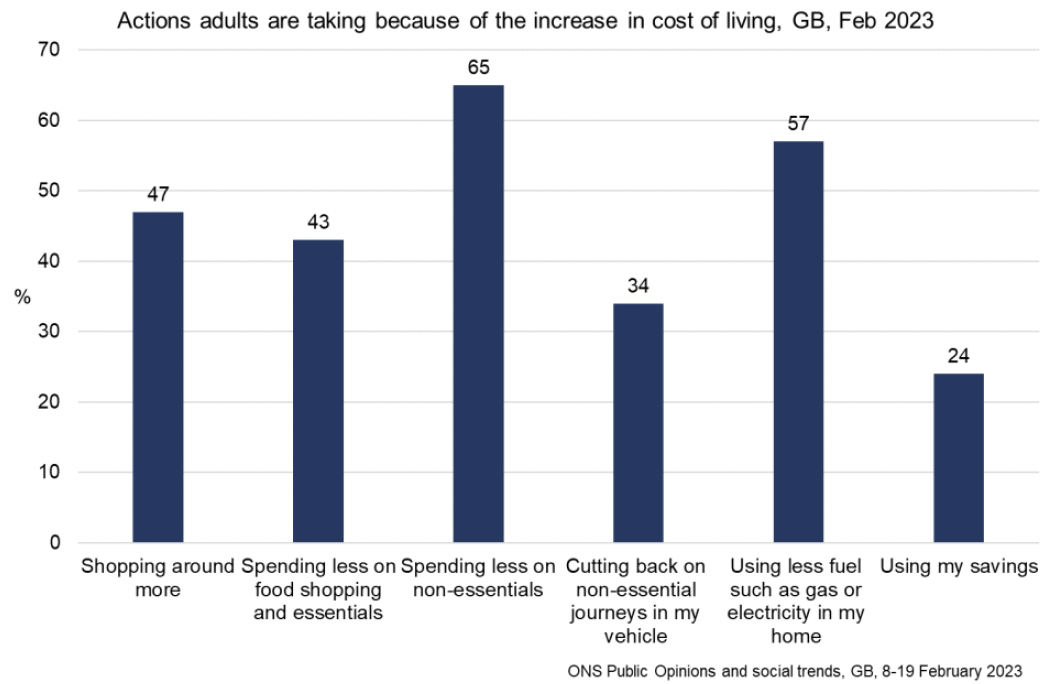
Retail Sales
- GB level retail sales volumes grew slightly by 0.5% in January, with a 0.6% increase in non-food store sales and 0.5% fall in food store sales. However, in the three months to January, sales volumes fell 0.9%, continuing the general downward trend in retail sales volumes since the middle of 2021.[15]
- Overall compared to January 2022, sales volumes have decreased 5.7% as the lifting of restrictions on hospitality enabled a return to eating out, and more recently rising prices and the cost of living affected sales volumes.
- The value of retail sales increased by 3.9% over this period, reflecting the increase in prices and fall in purchasing power that consumers are facing illustrated in the chart below by the widening gap between GB retail sales value and volume sold.
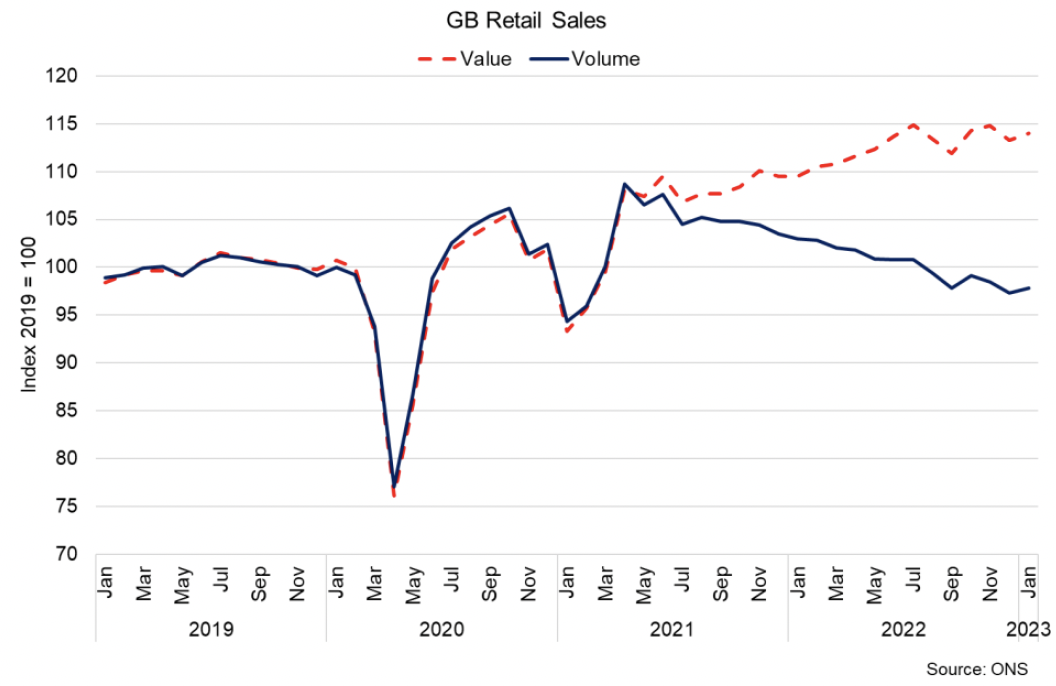
Household Savings and Consumer Credit
- The impacts of the rise in cost of living and higher interest rates on households are continuing to develop as disposable income, spending, savings and credit flows have been re-balancing over the past year following notable shifts during the pandemic.
- National accounts data show that after accounting for other income, interest payments, taxes and social contributions, total gross disposable income increased by 4.4% on an annual basis in Q3 2022. Over the same period, total consumer expenditure is estimated to have increased by 8.1%, driven by higher inflation. These movements have seen the household savings ratio (8.8% in Q3 2022) fall back over the last year from the high levels estimated during the pandemic, and indicates a tightening in household finances.[16]
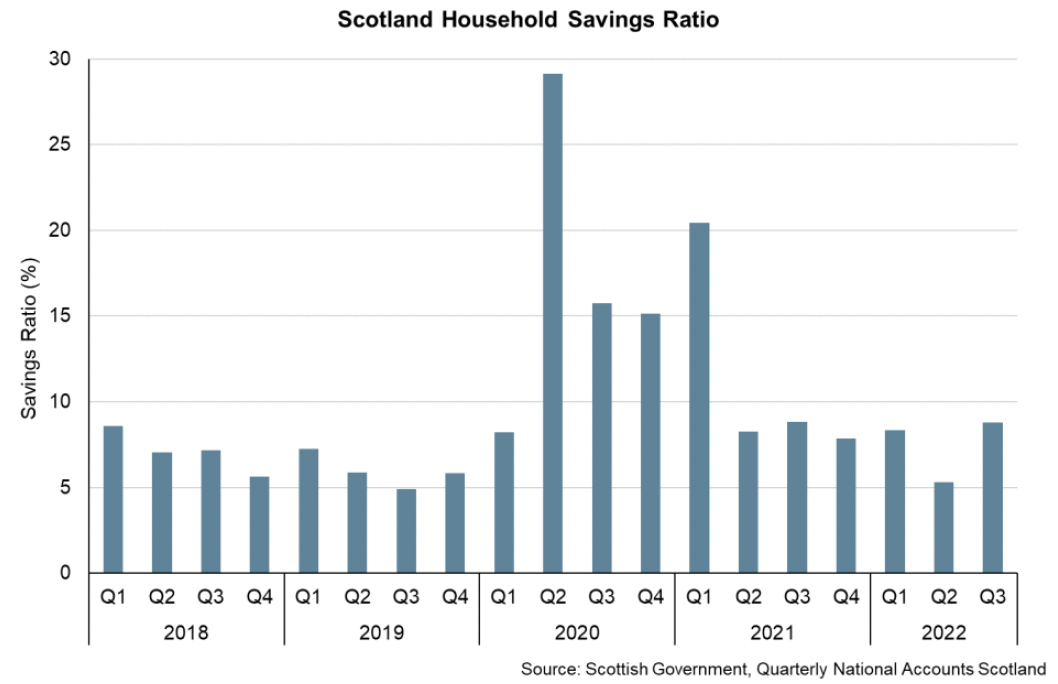
- More recently, at an aggregate level, Bank of England Money and Credit data shows additional net flows from UK households into deposit-like accounts rose slightly in January 2023 to £3.5 billion (compared to £3.3 billion in December) however is below the monthly average for 2022 (5.4%).[17]
- Alongside this, consumers borrowed an additional £1.6 billion in January, following £0.8 billion of borrowing in December, driven by borrowing on credit cards (£1.1 billion). This was the highest net borrowing by consumers since June 2022 and above the monthly average for 2022 (£1.2 billion).
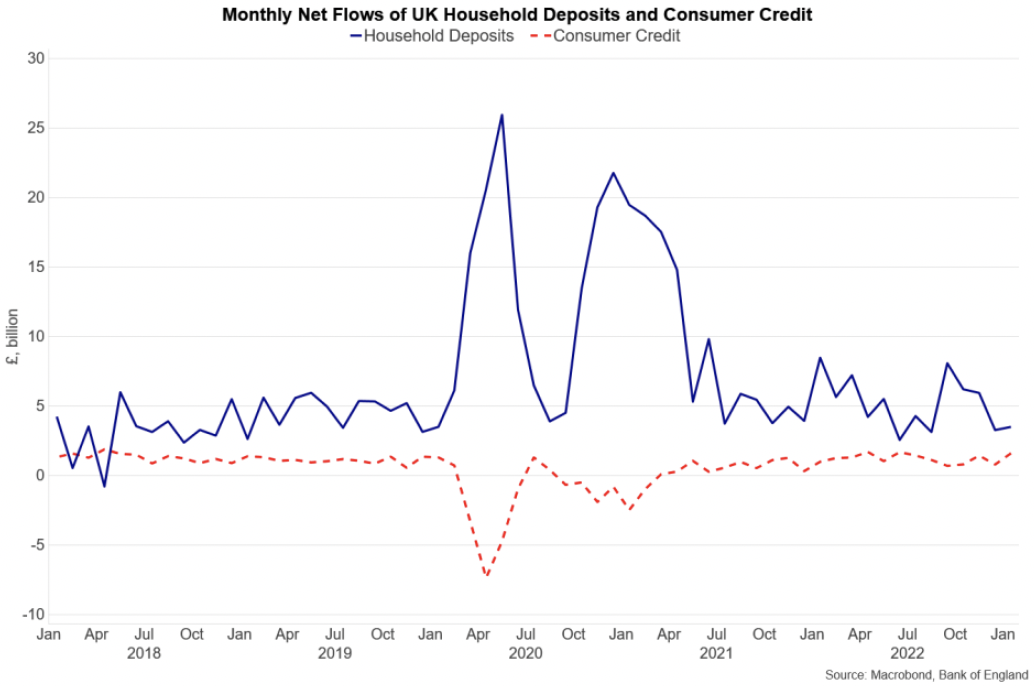
- Additional savings built up during the pandemic and credit have provided the potential to support consumption as household finances have been squeezed in real terms through higher inflation over the past year. Where savings or borrowing have supported spending to date, we may see consumption more at risk and exposed to lower levels of savings and higher interest rates/borrowing costs in the year ahead.
Contact
Email: OCEABusiness@gov.scot
There is a problem
Thanks for your feedback